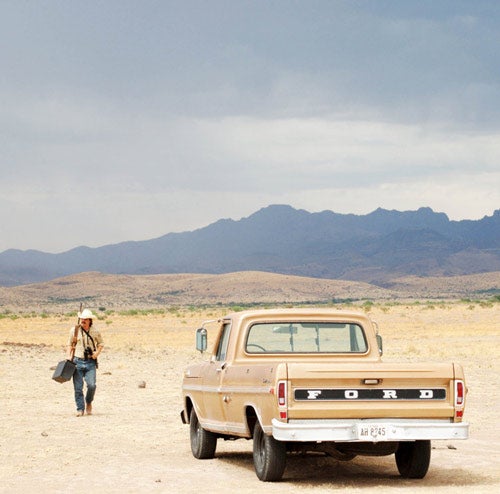Back from the dead: the town that hosted two Oscar hopes

Never mind Daniel Day-Lewis or Julie Christie. The real star of this year's Oscars may be a remote one-horse town deep in the desert of south-west Texas, which promises to become as iconic to the movie industry in the early 21st century as breathtaking outdoor locations such as Monument Valley were in the age of Technicolor.
The two most heavily nominated films up for awards this weekend, No Country For Old Men and There Will Be Blood, were both shot in the Chihuahuan desert around Marfa, a town that was all but given up for dead in the early 1970s but has since bloomed as the ultimate getaway for coastal big-city artists and art lovers.
In No Country, the Coen brothers' adaptation of Cormac McCarthy's bleak novel, the opening scenes revealing a drug deal gone wrong were shot just off Texas Ranch Road 2810.
The Coens wanted to do the whole shoot in New Mexico, which is where much of the movie ended up being made but, at McCarthy's insistence, they made sure that at least some of the story was shot in the state where it was set. For There Will Be Blood, Paul Thomas Anderson's bleak adaptation of the Upton Sinclair novel Oil!, the landscapes around Marfa stood in for the oil-rich southern end of California's Central Valley when it was first being drilled a century ago.
Marfa is hardly convenient – it is at least three hours' drive from the nearest airports, either in El Paso to the west or George Bush's boyhood hometown Midland to the north-east. But its combination of stunning landscapes, art galleries, bookstores, fancy restaurants and a hippie coffee shop or two is making it singularly attractive to a certain kind of independent film production.
Hollywood has always had a weakness for virgin territory. Monument Valley in northern Arizona became a firm favourite of John Ford in the 1950s, at a time when the landscape was still unfamiliar and almost impossible to reach without horses and camping gear. Most memorably, he shot The Searchers there. Marfa also featured in the James Dean vehicle Giant, directed by George Stevens.
By the mid-1960s, Marfa was as sad and near-dead as the west Texas town memorialised in Peter Bogdonavich's classic film The Last Picture Show. It was a minimalist artist from New York, Donald Judd, who revived it with money from an arts foundation, attracted, as he was, by the low price of property and the allure of desert light and mountain landscape.
Judd's own foundation, called Chinati after a local peak, now oversees the town, which has enjoyed a boom in second homes.
Not everyone is thrilled about the development. The World Wildlife Fund just put out an Oscars-timed release warning that the water supply from the Rio Grande and other local rivers is running dangerously low, with all sorts of implications for land use, wildlife and fish stocks.
"Land development for farming, pollution and over-use and diversion of water threaten not only the rivers themselves but also the land they support," the group said.
That's not Hollywood's fault, of course. But if more productions head out to west Texas, it might just become the industry's next little pet cause.
Subscribe to Independent Premium to bookmark this article
Want to bookmark your favourite articles and stories to read or reference later? Start your Independent Premium subscription today.

Join our commenting forum
Join thought-provoking conversations, follow other Independent readers and see their replies